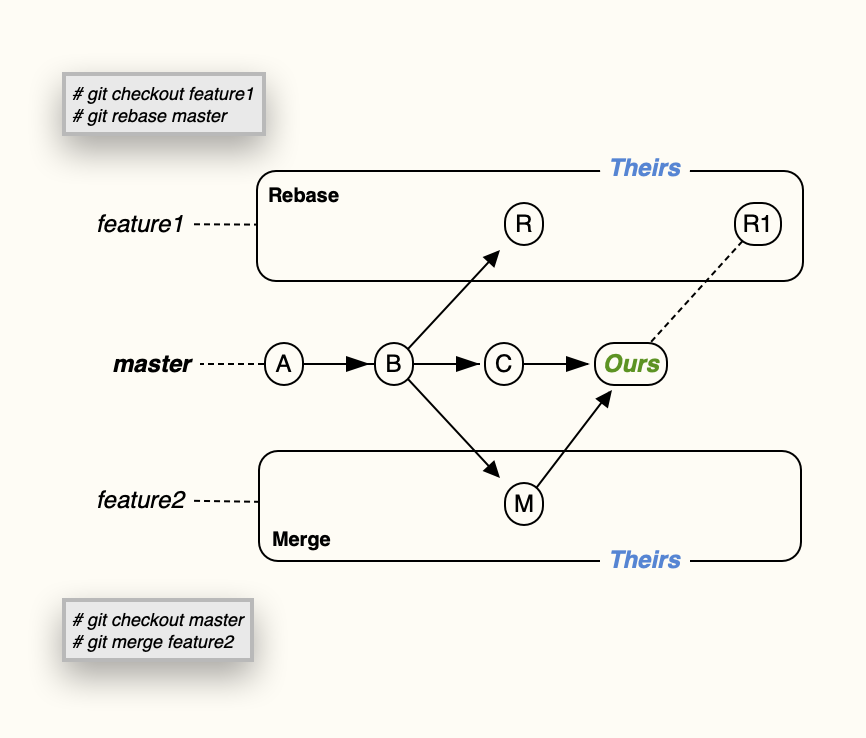I suspect you're confused here because it's fundamentally confusing. To make things worse, the whole ours/theirs stuff switches roles (becomes backwards) when you are doing a rebase.
Ultimately, during a git merge, the "ours" branch refers to the branch you're merging into:
git checkout merge-into-ours
and the "theirs" branch refers to the (single) branch you're merging:
git merge from-theirs
and here "ours" and "theirs" makes some sense, as even though "theirs" is probably yours anyway, "theirs" is not the one you were on when you ran git merge.
While using the actual branch name might be pretty cool, it falls apart in more complex cases. For instance, instead of the above, you might do:
git checkout ours
git merge 1234567
where you're merging by raw commit-ID. Worse, you can even do this:
git checkout 7777777 # detach HEAD
git merge 1234567 # do a test merge
in which case there are no branch names involved!
I think it's little help here, but in fact, in gitrevisions syntax, you can refer to an individual path in the index by number, during a conflicted merge
git show :1:README
git show :2:README
git show :3:README
Stage #1 is the common ancestor of the files, stage #2 is the target-branch version, and stage #3 is the version you are merging from.
The reason the "ours" and "theirs" notions get swapped around during rebase is that rebase works by doing a series of cherry-picks, into an anonymous branch (detached HEAD mode). The target branch is the anonymous branch, and the merge-from branch is your original (pre-rebase) branch: so "--ours" means the anonymous one rebase is building while "--theirs" means "our branch being rebased".
As for the gitattributes entry: it could have an effect: "ours" really means "use stage #2" internally. But as you note, it's not actually in place at the time, so it should not have an effect here ... well, not unless you copy it into the work tree before you start.
Also, by the way, this applies to all uses of ours and theirs, but some are on a whole file level (-s ours for a merge strategy; git checkout --ours during a merge conflict) and some are on a piece-by-piece basis (-X ours or -X theirs during a -s recursive merge). Which probably does not help with any of the confusion.
I've never come up with a better name for these, though. And: see VonC's answer to another question, where git mergetool introduces yet more names for these, calling them "local" and "remote"!


git merge,git cherry-pick,git rebase, andgit revert. – Considerate